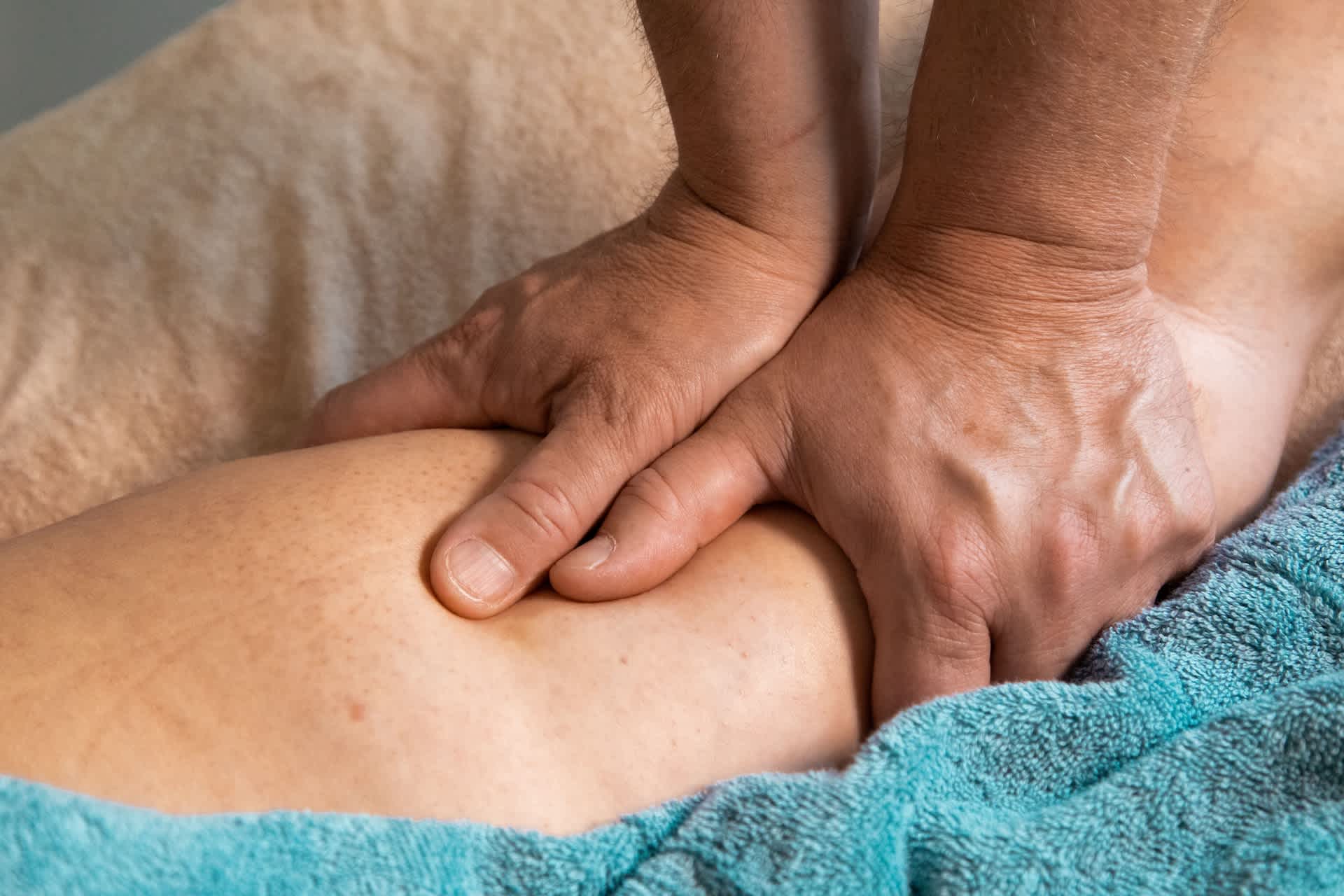The scope of Physiotherapists and Massage Therapists can sometimes appear to overlap, particularly in the treatment of musculoskeletal conditions. But, does a Physiotherapist do massage? In this article, we explain the scope of massage in Physiotherapy and how Physiotherapists can undergo additional Massage Therapy training in order to expand their service offerings.
So, does a Physiotherapist do Massage? Physiotherapists often incorporate elements of Massage into their day-to-day practice as a way of treating musculoskeletal conditions. Some Physiotherapists also have additional training in Massage Therapy and offer specialist services in their clinic.
Read on to learn more about how Physiotherapists incorporate massage into their practice and how they can train in more specialised areas of Massage Therapy.
Does a Physiotherapist Do Massage?
It’s first important to state that Physiotherapists are typically not trained Massage Therapists, therefore generally don’t do what individuals would consider to be regular massage. However, a common technique in Physiotherapy uses elements of massage to manipulate, mobilise and massage the body tissues. This is called Manual Therapy.
Some Physiotherapists may also be trained in Sports Massage Therapy or Deep Tissue Massage, particularly if they regularly see athletic clients, or those that have ongoing musculoskeletal conditions.
It has been found that such Physiotherapy and Massage Therapy techniques compliment each other, heightening the benefits of each solo therapy. A combination of the two therapies are thought to work well as routine maintenance for athletes or those with long-term conditions, as part of sports Physiotherapy care or for a specific event, or as rehabilitation.
Learn more about how Massage Therapy compliments Physiotherapy in our blog where we also discuss how a Physiotherapist can get into Massage Therapy and the qualifications needed to do so.
What is Manual Therapy?
Manual therapy is a hands-on Physiotherapy technique used to manipulate, mobilise and massage the body tissues. Typically, manual therapy is used for pain relief and joint mobility, as well as to help diagnose conditions. It will often be used alongside exercise prescription and rehabilitation.
Benefits of Manual Therapy
Manual therapy has a wide range of benefits, including:
- Pain relief
- Reduced stiffness
- Increased range of motion
- Improved blood circulation
- Helps fluid to drain more efficiently
- Promotes relaxation
What is Sports Massage?
Sports Massage is a type of massage that is typically used to treat sports injuries or long-term musculoskeletal conditions that are isolated to a specific part of the body, usually a result of over-training, trauma, muscle imbalance, or poor biomechanics. The treatment aims to aid recovery, reduce the risk of recurrence, or assist with performance ahead of an event.
Benefits of Sports Massage
Sports Massage has a number of benefits, both mental and physical, which compliment Physiotherapy very well:
- Increased range of motion
- Increased flexibility
- Increased sense of wellbeing
- Decreases recovery time
- Decreased muscle tension
- Decreased muscle spasms
- Better sleep
Learn more about the scope of Sports Massage in our blog, What is the Difference Between Sports Massage and Deep Tissue Massage, where we go into much more detail about each type of massage.
What’s the Difference Between Massage Therapist and Physiotherapist?
The key difference between Physiotherapy and Massage Therapy is that Physiotherapy is classed as a medical profession, whereas Massage Therapy is a Complementary and Alternative Medicine (CAM).
As such, Physiotherapists formally train for a minimum of 3 years at degree level before registering with a governing body (e.g. The Chartered Society of Physiotherapists). Meanwhile, Massage Therapy is relatively unregulated and relies upon self-regulation to ensure proper training and qualification.
Another key difference between Physiotherapy and Massage Therapy is in their techniques and what they can treat; Physiotherapy has a much wider scope of treatment and uses a large variety of techniques in this, including:
- Manual therapy
- Stretching
- Exercise
- Electrotherapy (electrical stimulation)
- Ultrasound therapy
- Ice treatments
Additionally, a Physiotherapist can incorporate elements of massage into their practice (and can easily train in Massage Therapy), whereas a Massage Therapist cannot perform elements of Physiotherapy in their practice; there are limited to massage techniques, such as:
- Swedish-style massage
- Effleurage
- Petrissage
- Compression
- Friction
- Tapotement
- Vibration
- Gliding
- Stretching
- Percussion
- Trigger points
Can a Physiotherapist Train in Massage Therapy?
Massage Therapy is a common area in which Physiotherapists train to continue their professional development and to offer a wider range of services to clients. Since they already have a medical background and a good understanding of anatomy and physiology, Physiotherapists and Physiotherapy students can easily train in Massage Therapy and, in some cases, may be able to directly advance onto Level 4 courses.
It is, however, harder for Massage Therapists to train as Physiotherapists; they would need to study, as a minimum, a three-year degree-level Physiotherapy course. You can learn more about how to become a Physiotherapist or a Massage Therapist in our recent blogs where we discuss the qualifications required and the various routes that individuals can take.
Final Thoughts
Whilst Physiotherapists are not Massage Therapists, they do perform elements of Massage Therapy in their day-to-day practice and some may have additional Massage Therapy training.
Breeze Academy can provide such training with Sports Massage Therapy courses. We offer Level 3, Level 4 and Direct to Level 4 courses that are ideal for Physiotherapists and Physiotherapy students wishing to advance their skills and practice services. Our courses are available across the UK and provide you with everything you need to successfully provide Sports Massage Services.
Learn more online or get in touch more for further assistance.
